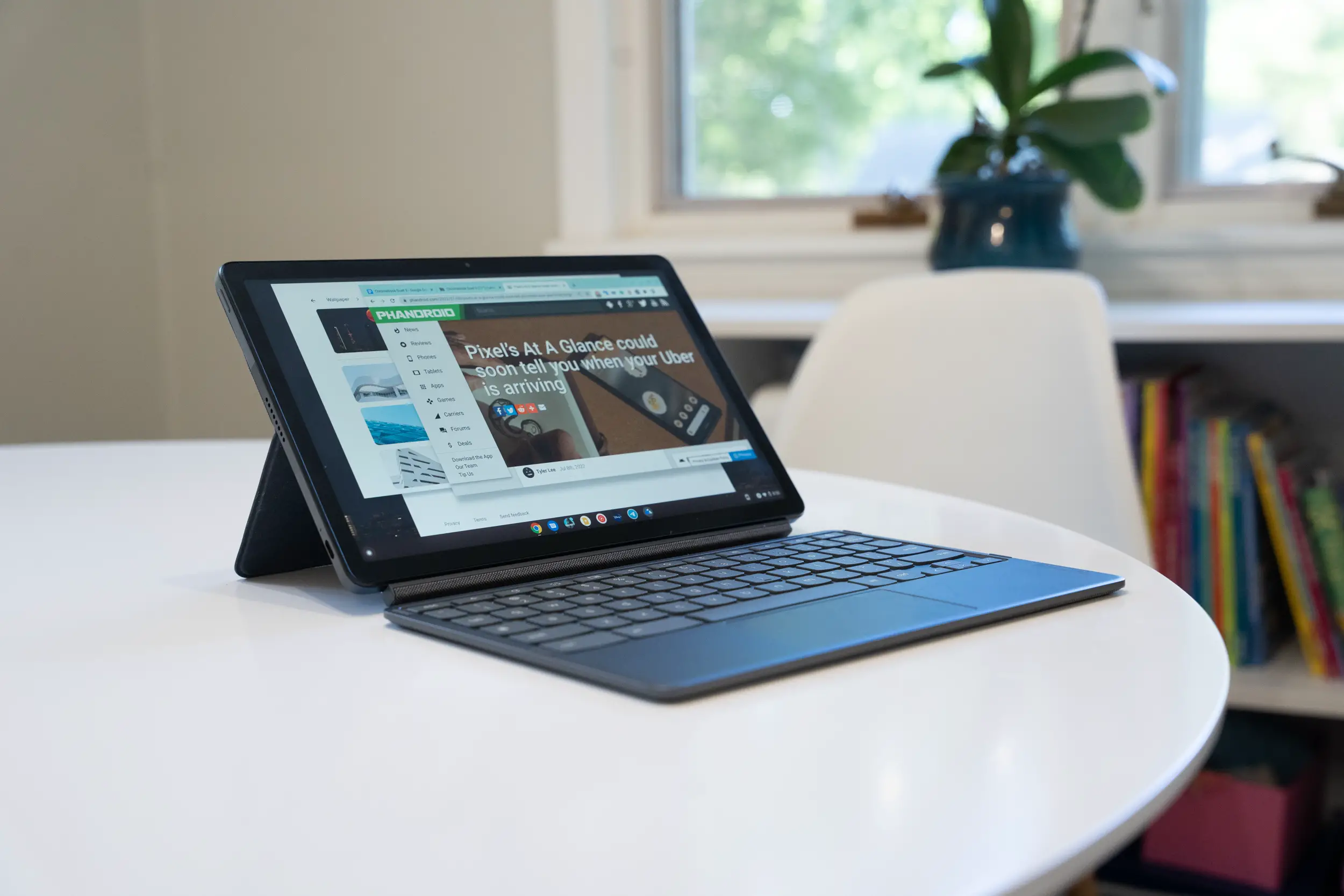
AT&T has reported in on their earnings for the first quarter of 2011, and despite loss of iPhone exclusivity has seen smartphones grow to comprise 46.2 percent of postpaid subscriber sales. Revenue in the first quarter was up 2.3 percent at $31.2 billion, though income dropped from $6 billion to $5.8 billion year-over-year. Wireless subscriptions increased by 2 million as AT&T sold a record 5.5 million smartphones in the first quarter.
So there you have it: loss of iPhone exclusivity didn’t have quite the impact many expected. AT&T users weren’t running for the hills and the change didn’t seem to deter many from signing new contracts with Ma Bell. See the full report on AT&T’s earnings below.
10.2 Percent Wireless Revenue Growth, Record Net Adds and Smartphone Sales Highlight AT&T’s First-Quarter Results
$0.57 diluted EPS, compared to $0.41 diluted EPS, and $0.58 per diluted share when excluding significant items, in first quarter of 2010
Consolidated revenues of $31.2 billion in the first quarter, up more than $700 million, or 2.3 percent, versus the year-earlier period
10.2 percent growth in wireless revenues, with an 8.6 percent increase in wireless service revenues
Best-ever first-quarter increase in total wireless subscribers, up 2.0 million to reach 97.5 million subscribers in service, with gains in every category
Best-ever first-quarter smartphone sales of more than 5.5 million
iPhone activations increased nearly 1 million year over year to 3.6 million, with 23 percent of subscribers new to AT&T; iPhone subscriber churn unchanged year over year
Best-ever first-quarter connected device net adds of 1.3 million
Branded computing subscribers (includes tablets, aircards and other data-only devices) up 421,000, doubling since the first quarter of 2010 to reach 3.4 million
23.9 percent growth in wireless data revenues, up almost $1 billion versus the year-earlier quarter
Postpaid subscriber ARPU (average monthly revenues per subscriber) up 2.4 percent to $63.39, the ninth consecutive quarter with a year-over-year increase
Postpaid churn stable excluding the impacts of the Alltel and Centennial integration
Third consecutive quarter of year-over-year growth in wireline consumer revenues, driven by AT&T U-verse® services
218,000 net gain in AT&T U-verse TV subscribers to reach 3.2 million in service, with continued high broadband and voice attach rates
26.1 percent growth in wireline consumer IP data revenues, driven by AT&T U-verse expansion
175,000 net gain in wireline broadband connections
Strategic business services revenues continue to increase, up 18.8 percent year over year, the best performance in more than two years
Note: AT&T’s first-quarter earnings conference call will be broadcast live via the Internet at 10 a.m. ET on Wednesday, April 20, 2011, at www.att.com/investor.relations.DALLAS, April 20, 2011 — AT&T Inc. (NYSE:T) today reported first-quarter results, highlighted by continued robust mobile broadband growth with record first-quarter smartphone sales and a two-fold year-over-year increase in branded computing subscribers.
“We delivered another robust mobile broadband growth quarter for a very solid start to the year,” said Randall Stephenson, AT&T chairman and chief executive officer. “We posted double-digit wireless revenue growth, and we set new first-quarter records in total net adds, connected device net adds and smartphone sales. Growth in tablets and other branded computing subscribers also continues to be strong.
“Mobile broadband networks are driving unprecedented growth and innovation, and AT&T is playing a leading role in bringing these benefits to customers,” Stephenson said. “That’s why our agreement to acquire T-Mobile USA, which we announced in March, is so important. Combined, the two companies’ spectrum and network assets will allow us to simultaneously address spectrum issues created by this increased demand and improve customers’ network experience as volumes continue to grow.”
First-Quarter Financial Results
For the quarter ended March 31, 2011, AT&T’s consolidated revenues totaled $31.2 billion, up more than $700 million, or 2.3 percent, versus the year-earlier quarter, marking the company’s fifth consecutive quarter with a year-over-year revenue increase.
Compared with results for the first quarter of 2010, operating expenses were $25.4 billion versus $24.6 billion; operating income was $5.8 billion, down from $6.0 billion; and AT&T’s operating income margin was 18.6 percent, compared to 19.6 percent.
First-quarter 2011 net income attributable to AT&T totaled $3.4 billion, or $0.57 per diluted share. These results compare with reported net income attributable to AT&T of $2.5 billion, or $0.41 per diluted share, in the first quarter of 2010. Excluding 2010 significant items, earnings per share for the first quarter of 2011 was stable with earnings per share of $0.58 per diluted share in the year-ago first quarter.
First-quarter 2011 cash from operating activities totaled $7.7 billion, and capital expenditures totaled $4.2 billion. Free cash flow — cash from operating activities minus capital expenditures — totaled $3.6 billion.
Wireless Operational Highlights
Led by strong performance in mobile broadband in the first quarter, AT&T delivered continued solid growth in its wireless business, including record first-quarter subscriber growth and stable churn. Highlights included:
Mobile Broadband Drives Solid Subscriber Gains. AT&T posted a net gain in total wireless subscribers of 2.0 million, to reach 97.5 million in service. This included gains in every customer category. First-quarter net adds reflect adoption of smartphones, increases in prepaid subscribers, strength in the reseller channel and a record first quarter for connected devices such as eReaders, security systems, fleet management systems and a host of other products. Retail net adds for the quarter include postpaid net adds of 62,000. Excluding the impacts of the Alltel and Centennial integration migrations, postpaid net adds were approximately 165,000. Prepaid net adds were 85,000. Connected device net adds were 1.3 million, and reseller net adds were 561,000.
Tablet Sales Drive Branded Computing Subscribers. AT&T had a strong quarter with branded computing subscribers, a new growth area for the company that includes tablets, aircards, MiFi devices, tethering plans and other data-only devices. AT&T added 421,000 of these devices to reach 3.4 million, twice as many as a year ago. Most of those new subscribers were tablets with 322,000 added in the quarter. More than 80 percent of those tablets were booked to the prepaid category.
Sequential Churn Stable. Churn levels were relatively stable sequentially. Total churn was 1.36 percent versus 1.30 percent in the first quarter of 2010 and 1.32 percent in the fourth quarter of 2010. Postpaid churn was 1.18 percent, compared to 1.07 percent in the year-ago first quarter and 1.15 percent in the fourth quarter of 2010. Excluding the impacts of the Alltel and Centennial migrations, postpaid churn was 1.12 percent for the quarter, compared with 1.05 percent in the year-ago quarter and 1.10 percent in the fourth quarter of 2010.
Smartphone Sales Remain Strong. AT&T had another strong quarter of smartphone sales. (Smartphones are voice and data devices with an advanced operating system to better manage data and Internet access.) More than 5.5 million smartphones were sold in the first quarter, the third-highest quarter ever and an increase of more than 60 percent year over year. During the quarter, 3.6 million iPhones were activated. Approximately 65 percent of postpaid sales were smartphones.
At the end of the quarter, 46.2 percent of AT&T’s 68.1 million postpaid subscribers had smartphones, up from 34.7 percent a year earlier. The average ARPU for smartphones on AT&T’s network is 1.8 times that of the company’s other devices. More than 80 percent of smartphone subscribers are on FamilyTalk and/or business discount plans. Churn levels for these subscribers are significantly lower than for other postpaid subscribers.
Double-Digit Wireless Revenue Growth. Total wireless revenues, which include equipment sales, were up 10.2 percent year over year to $15.3 billion. Wireless service revenues increased 8.6 percent, to $14.0 billion, in the first quarter.
Wireless Data Revenues Lead Growth. Wireless data revenues — driven by messaging, Internet access, access to applications and related services — increased nearly $1 billion, or 23.9 percent, from the year-earlier quarter to $5.1 billion. AT&T postpaid wireless subscribers on monthly data plans increased by 18.7 percent over the past year. Versus the year-earlier quarter, total text messages carried on the AT&T network increased by more than 25 percent to 179.8 billion, and multimedia messages increased by 54.2 percent to 3.7 billion.
Postpaid ARPU Expansion. Driven by strong data growth, postpaid subscriber ARPU increased 2.4 percent versus the year-earlier quarter to $63.39. This marked the ninth consecutive quarter AT&T has posted a year-over-year increase in postpaid ARPU. Excluding the impact of the Alltel merger, postpaid ARPU growth would have been about 3 percent year over year. Postpaid data ARPU reached $23.35, up 16.0 percent versus the year-earlier quarter.
Wireless Margins Reflect Strong Smartphone Sales. First-quarter wireless margins reflected increased operating costs associated with strong smartphone sales, high customer upgrade levels and the Alltel and Centennial merger costs, offset in part by improved operating efficiencies and further revenue growth from the company’s base of high-quality smartphone subscribers. AT&T’s first-quarter wireless operating income margin was 25.8 percent versus 30.0 percent in the year-earlier quarter, and AT&T’s wireless EBITDA service margin was 39.0 percent, compared with 44.5 percent in the first quarter of 2010. Without customer migration costs from the Alltel and Centennial mergers, service margin would have been 40.5 percent. (EBITDA service margin is earnings before interest, taxes, depreciation and amortization, divided by total service revenues.) First-quarter wireless operating expenses totaled $11.4 billion, up 16.8 percent versus the year-earlier quarter, and wireless operating income was $3.9 billion, down 5.3 percent year over year.
Wireline Operational Highlights
AT&T’s first-quarter wireline results were highlighted by continued growth in consumer revenues, sustained growth in revenues from strategic business services and solid cost management. Highlights included:
Growth in Wireline Consumer Revenues Continues. Driven by strength in IP data services, revenue from residential customers totaled $5.3 billion in the first quarter, up 0.5 percent year over year, the third consecutive quarter of year-over-year growth.
U-verse Drives Consumer Growth. AT&T U-verse TV added 218,000 subscribers to reach 3.2 million in service. In the first quarter, the AT&T U-verse High Speed Internet attach rate continued to run above 90 percent and nearly 60 percent of subscribers took AT&T U-verse Voice. More than three-fourths of AT&T U-verse TV subscribers have a triple- or quad-play option from AT&T. ARPU for U-verse triple-play customers was $168, up 14.3 percent year over year.
AT&T’s U-verse deployment now reaches 28 million living units. Companywide penetration of eligible living units is 15.3 percent, and across areas marketed to for 30 months or more, overall penetration is 23.8 percent. AT&T’s total video subscribers, which combine the company’s U-verse and bundled satellite customers, reached 5.1 million at the end of the quarter, representing 20.6 percent of households served.
Wireline Broadband Growth Remains Strong. Driven by strength in AT&T U-verse High Speed Internet service and standalone broadband, AT&T posted a 175,000 net gain in wireline broadband connections. About two-thirds of consumers have a broadband plan of 3 Mbps or higher.
IP Data Growth Transforms Consumer. Increased AT&T U-verse penetration and a significant number of subscribers on triple- or quad-play options drove 26.1 percent year-over-year growth in IP revenues from residential customers (broadband, U-verse TV and U-verse Voice). IP revenues now represent 46.9 percent of total wireline consumer revenue, up from 37.4 percent in the first quarter of 2010.
Growth in Revenues Per Household. Wireline revenues per household served increased 6.5 percent versus the year-earlier first quarter and were up 1.4 percent sequentially (average revenue per household is total consumer wireline revenue divided by the average monthly households in service), driven by AT&T U-verse services. This marked AT&T’s 13th consecutive quarter with year-over-year growth in wireline consumer revenues per household.
Consumer Connection Trends. In the first quarter, AT&T posted a decline in total consumer revenue connections due primarily to expected declines in traditional voice access lines, consistent with broader industry trends and somewhat offset by increases in U-verse TV, broadband and VoIP (Voice over Internet Protocol) connections. AT&T U-verse Voice connections increased by 181,000 in the quarter and 716,000 over the past four quarters. Total consumer revenue connections at the end of the first quarter were 43.1 million, compared with 45.0 million at the end of the first quarter of 2010 and 43.4 million at the end of the fourth quarter of 2010.
Strongest Growth in Strategic Business Services in More than Two Years. Revenues from new-generation capabilities that lead AT&T’s most advanced business solutions — including Ethernet, VPNs, hosting, IP conferencing and application services — grew 18.8 percent versus the year-earlier quarter, their strongest growth in more than two years, continuing AT&T’s strong trends in this category. Total business revenues were $9.3 billion, a decline of 4.5 percent versus the year-earlier quarter and down 2.0 percent sequentially, reflecting economic weakness in voice and legacy data products and the third-quarter 2010 sale of the company’s Japan assets. When normalized for the Japan sale, total business revenues declined 3.6 percent, about the same rate as normalized results for the fourth quarter of 2010 and improved from the year-ago quarter. Business service revenues, which exclude CPE, declined 4.4 percent year over year and were down slightly sequentially.
Growth in Business IP Revenues. Total business IP data revenues grew 8.5 percent versus the year-earlier first quarter, led by growth in VPN revenues. More than 70 percent of AT&T’s frame customers have made the transition to IP-based solutions, which allow them to easily add managed services such as network security, cloud services and IP conferencing on top of their infrastructures. Total business data revenue growth was 0.3 percent when compared to a year earlier.
Wireline Operating Expenses Down 2.7 Percent Year Over Year. AT&T’s first-quarter wireline operating income margin was 11.5 percent, down slightly compared to 12.0 percent in the year-earlier quarter and 13.0 percent in the fourth quarter of 2010. Improved consumer revenue trends and execution of cost initiatives helped to partially offset declines in voice revenues and storm-related costs in the West. First-quarter total wireline revenues were $15.0 billion, down 3.2 percent versus the year-earlier quarter. First-quarter wireline operating expenses were $13.2 billion, down 2.7 percent versus the first quarter of 2010 and up 0.4 percent sequentially. Wireline operating income totaled $1.7 billion, compared to $1.9 billion in the first quarter of 2010 and $2.0 billion in the fourth quarter of 2010.










This goes to show that the iPhone doesn’t have as much of an impact as it used to. AT&T is being really smart about opening up to other OSes. They are even giving some big support to webOS by hosting a webOS developer conference.
And it also goes to show that AT&T isn’t as bad as people think. Or, at least, it’s not any worse than the other carriers.
Ok let me get this straight…..AT&T sold 5.5 million smartphones in the quarter. Of those 5.5 million, 3.6 million of them were iPhones, a number which represents a 1 million unit INCREASE from the same quarter of the previous year, and this is somehow an example of the iPhone’s diminishing impact????
You fandroids are dumber than I thought u were….
You sir are an idiot. You must not know how to read very well.
“Best-ever first-quarter smartphone sales of more than 5.5 million
iPhone activations increased nearly 1 million year over year to 3.6 million, with 23 percent of subscribers new to AT&T; iPhone subscriber churn unchanged year over year”.
Yeah I can’t read at all…..doofus
Wow this is surprising. So many people still want dumbphones. Smartphone sales should make up 75% especially with free low end android devices.
It’s not so much the cost of the devices, as it is the cost of the associated required data plans. Still a ton of people out there that don’t want a mandatory $25 a month added to the cost of their already too high cell phone bill. With AT&T, as well as I think all other major US providers, if I buy a smart phone from them, I have to have a data plan, whether i want it or not. (no option to just use the wifi for data)
I never thought about that, but i completely understand. Data plans are ridiculously overpriced.
iphone dominates AT&T, but non-IPhone smartphones grew faster.
Iphone’s were the only option and have many problems that were blamed on AT&T. In comes android a better more stable os. And yes a lot of folks just want a good phone only.
This is exactly why we opened http://CellPig.com The smartphone market is blowing up and we’re riding the train. Honestly, its hard to keep our accessory line up with all of the new releases.
The only thing AT&T is making money off is IPHONES ONLY NOT ANDROID PHONES.
You forgot to mention, in the synopsis, that 60% of those 5.5 million handsets were the iPhone alone, the other 40% being Android, WP7, and everything else. Something worth highlighting, and already highlighted at Engadget. It would not be due diligence to ignore the competition. Maybe Android can actually stand on its own two feet, even in second place? I would think so.
I still find it surprising that people don’t think AT&T have a cheap affordable option. BL2, You speak of dumb phones, and there being people out there who still use them – when the article states 561 000 reseller add ons, then take for granted that those are new tracfone subscriptions. And tracfone doesnt sell complicated phones or plans…”there are a lot more of us ugly mfs, than you pretty guys” Frank Zappa